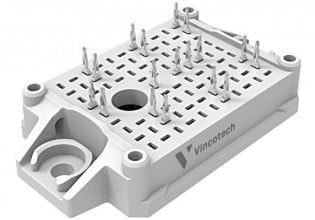Hybrid Material Improves the Performance of Silicon in Li-ion Batteries
Researchers at the University of Eastern Finland have developed a hybrid material of mesoporous silicon microparticles and carbon nanotubes that can improve the performance of silicon in Li-ion batteries. Above is a SEM image of hybrid anode material. Mesoporous silicon microparticles are bound together with carbon nanotubes at multiple points. (image credit: Timo Ikonen)
In the future, silicon will gradually replace carbon as the anode material in Li-ion batteries (LIBs). This development is driven by the fact that the capacity of silicon is ten times higher than the capacity of graphite, which is nowadays used as the anode material in LIBs. Using silicon in the anode makes it possible to even double the capacity of the total battery cell.
However, silicon is facing severe challenges in battery technology due to its unstable material properties. Moreover, there is no technology available so far to produce feasible anodes solely from silicon.
To minimize the reducing effect of high charging rates on the capacity of silicon anodes, researchers from the University of Eastern Finland have developed a hybrid material of mesoporous silicon (PSi) microparticles and carbon nanotubes (CNTs). According to the researchers, the hybrid material needs to be realized through chemical conjugation of PSi and CNTs with the right polarity so as to not hinder the diffusion of lithium ions into silicon. With the right type of conjugation, also the electrical conductivity and mechanical durability of the material was improved.
Further, the PSi microparticles used in the hybrid material were produced from barley husk ash to minimize the carbon footprint of the anode material and to support its sustainability. Silicon was produced through a simple magnesiothermic reduction process applied to the phytoliths that are amorphous porous silica structures found in abundance in husk ash. The findings were published in Scientific Reports and Materials Chemistry and Physics.
Next, the researchers are aiming to produce a full silicon anode with a solid electrolyte to address the challenges related to the safety of LIBs and to the unstable solid electrolyte interface (SEI).
“The progress of the LIB research is very exciting, and we want to contribute to the field with our know-how related to mesoporous structures of silicon. Hopefully, the EU will invest more in the basic research of batteries to pave the wave for high performance batteries and to support the competitiveness of Europe in this field. The Battery 2030+ roadmap would be essential in supporting this progress,” Professor Vesa-Pekka Lehto from the University of Eastern Finland notes.
Research articles:
Timo Ikonen, Nathiya Kalidas, Katja Lahtinen, Tommi Isoniemi, Jussi Toppari, Ester Vázquez, Antonia Herrero-Chamorro, José Luis Fierro, Tanja Kallio & Vesa-Pekka Lehto, Conjugation with carbon nanotubes improves the performance of mesoporous silicon as Li-ion battery anode. Sci. Rep., 10:5589 (2020), DOI:10.1038/s41598-020-62564-0.
Nathiya Kalidas, Joakim Riikonen, Wujun Xu, Katja Lahtinen, Tanja Kallio & Vesa-Pekka Lehto, Cascading use of barley husk ash to produce silicon for composite anodes of Li-ion batteries. Mat. Chem. Phys., 245:122736 (2020), DOI:10.1016/j.matchemphys.2020.122736.






